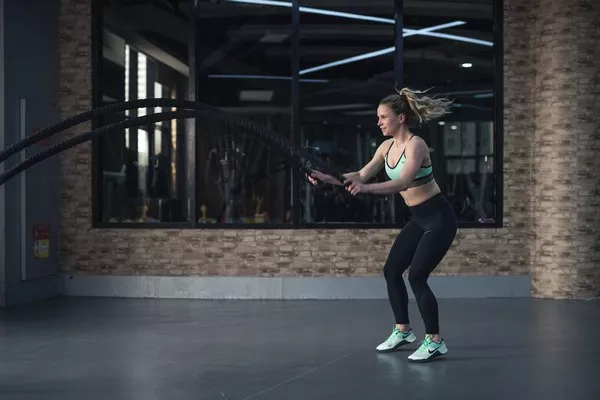When providing skin care services, it’s essential to protect your client’s hair from coming into contact with skin care products. While these products are formulated to nourish and care for the skin, they may not be suitable for the hair and could cause buildup, irritation, or unwanted effects. For instance, facial creams, exfoliants, or masks may leave residue that could weigh down hair or cause it to look greasy. Proper techniques and product usage can ensure that skin care treatments remain effective while keeping the client’s hair protected.
In this article, we will explore the various products and techniques you can use during a skin care service to prevent hair from being exposed to skin care products. We will also discuss why this is important, how to ensure that hair stays clean, and how you can maintain an effective skincare routine for your clients without compromising their hair health.
Why Preventing Skin Care Products from Entering the Hair is Important
When performing skin care services, your focus is on providing the most effective treatment for the skin. However, you must also consider the health of the client’s hair. Skin care products can be heavy, oily, or contain ingredients that aren’t ideal for hair care. Many facial creams, oils, and masks contain occlusive agents, which are designed to trap moisture in the skin, but they can leave a greasy residue on hair if they come into contact with it. Additionally, some skin care products contain fragrances, preservatives, or chemicals that can irritate the scalp, cause buildup, or make the hair greasy.
Keeping hair free from these products ensures that clients leave the service with both their skin and hair in optimal condition. This is especially true for clients with sensitive skin or those who have long hair that easily collects product residue.
Protective Measures for Clients’ Hair During Skin Care Services
To prevent skin care products from entering the hair, it’s important to use a combination of protective techniques and products. By adopting these practices, you can ensure that the hair stays clean while you provide the necessary skin treatment.
Use of Protective Hairbands or Caps
One of the simplest and most effective methods to prevent skin care products from touching the hair is by using a protective hairband or cap. These tools can securely hold the hair back, keeping it away from the face and preventing any product from inadvertently making contact with the hairline. Hairbands or caps are particularly helpful during facials, as they keep the hair in place and reduce the risk of the client’s hair becoming a source of contamination.
Hairbands made of soft, non-elastic material or a disposable cap can help keep the hair away from the face without causing discomfort or leaving marks. Disposable caps are especially convenient in a professional setting, as they can be easily discarded after each use, ensuring hygiene.
Use of Headbands to Hold Hair Back
Headbands are another great tool for keeping hair away from the face during skin care treatments. They are often more comfortable than traditional hair ties and provide a less tight fit, making them a good option for clients with longer or thicker hair. A headband designed for skin care treatments can help keep the hair out of the way, while still providing easy access to the face for cleaning, applying masks, or exfoliating.
For clients who do not want to wear a full hair cap, a headband can be a more relaxed alternative. It ensures that the hairline remains free from product, and it also helps to absorb sweat and oils that could otherwise drip into the hair during a treatment.
Product Application Techniques to Avoid Hair Contact
While protective tools are essential, it’s also crucial to be mindful of how you apply skin care products. The way you handle product application can make a significant difference in ensuring that no product accidentally transfers to the hair.
Targeted Application on the Skin
During skin care treatments, be sure to focus on applying products directly to the face and neck area, without straying too close to the hairline. When applying facial creams, serums, or masks, avoid the hairline, as this can cause residue to transfer. Instead, concentrate on the forehead, cheeks, chin, and nose, which are the primary areas of concern for most treatments. By keeping the application area restricted, you can prevent products from running into the hair.
When applying facial products like serums or masks, use a gentle, controlled motion. This minimizes the chances of the product spilling over or running down the face and into the hair.
Use of Tools to Apply Products
Using the right tools to apply products can reduce the risk of getting them on the client’s hair. Instead of applying products with your fingers, consider using a brush or spatula to precisely apply the products to the skin. These tools allow you to direct the product exactly where it is needed, avoiding unnecessary contact with the hairline. Brushes designed for facials also help ensure an even, smooth application without excess product spilling into unwanted areas.
Avoid Over-Application
Another important consideration is the amount of product applied during a treatment. Using too much product increases the likelihood that excess will drip down to the hairline, potentially making contact with the hair. Always use the appropriate amount of product for the treatment, following the manufacturer’s recommendations. Over-application not only risks product contamination in the hair but can also result in product wastage.
Specialized Skin Care Products for Preventing Hair Contact
In some cases, specific skin care products can be used that are less likely to affect the hair if they come into contact with it. These products tend to be lighter or formulated to absorb quickly into the skin, preventing residue from lingering. Choosing the right types of products can minimize the impact on the client’s hair during the treatment.
Lightweight Products with Quick Absorption
Lightweight moisturizers, gels, and serums are less likely to leave residue on the hair, especially if they are formulated to absorb quickly into the skin. These types of products tend to be less oily and are often more suitable for individuals with oily or combination skin. Lightweight products are an ideal option if you’re concerned about hairline contamination, as they tend to sink into the skin quickly, reducing the chances of product transfer to the hair.
Use of Non-Oily and Non-Comedogenic Products
Non-comedogenic products are formulated to not clog pores and are typically lighter and easier to apply. These products are often used in facial treatments for clients with sensitive or acne-prone skin, and they generally have a more matte finish. Non-oily products are also less likely to make contact with the hairline or cause an oily buildup in the hair, making them a good choice for clients concerned about product residue.
Oil-Free Face Masks
While face masks are often part of skin care treatments, some of them contain oils that can drip or spill into the hair. To prevent this, choose oil-free face masks that are less likely to transfer. Gel-based masks or clay masks, for instance, have a thicker consistency and are less prone to running down the face and into the hair. These products also provide effective treatments without leaving a greasy residue.
How to Deal with Product Spills on the Hairline
Despite your best efforts, there may be instances where a small amount of product ends up near the hairline. In such cases, it’s important to know how to handle it quickly to avoid any long-lasting effects on the hair.
Immediate Wipe Down
If you notice product on the hairline, immediately wipe it away with a clean cloth or cotton pad. This helps to prevent the product from setting into the hair and causing buildup. For products that are more challenging to remove, you can gently rinse the affected area with water or a mild cleanser to ensure the hairline stays clean.
Offering Clients a Quick Hair Touch-Up
If the client’s hair has been affected despite your precautions, offering them a quick hair touch-up service can help them feel more comfortable after the treatment. You can use a dry shampoo or a hairbrush to freshen up the hairline and remove any excess product, ensuring they leave the appointment feeling fully refreshed.
Conclusion
Preventing skin care products from coming into contact with a client’s hair during a treatment is an essential aspect of maintaining both skin and hair health. By using protective tools like hairbands or caps, applying products carefully, and selecting the right types of products, you can effectively minimize the risk of product contamination. Additionally, knowing how to deal with any product spills promptly ensures that the client’s hair remains clean and free of unwanted residue. By incorporating these practices into your routine, you can provide a seamless, professional skin care service that leaves both the skin and hair looking and feeling their best.
Related Topics





























